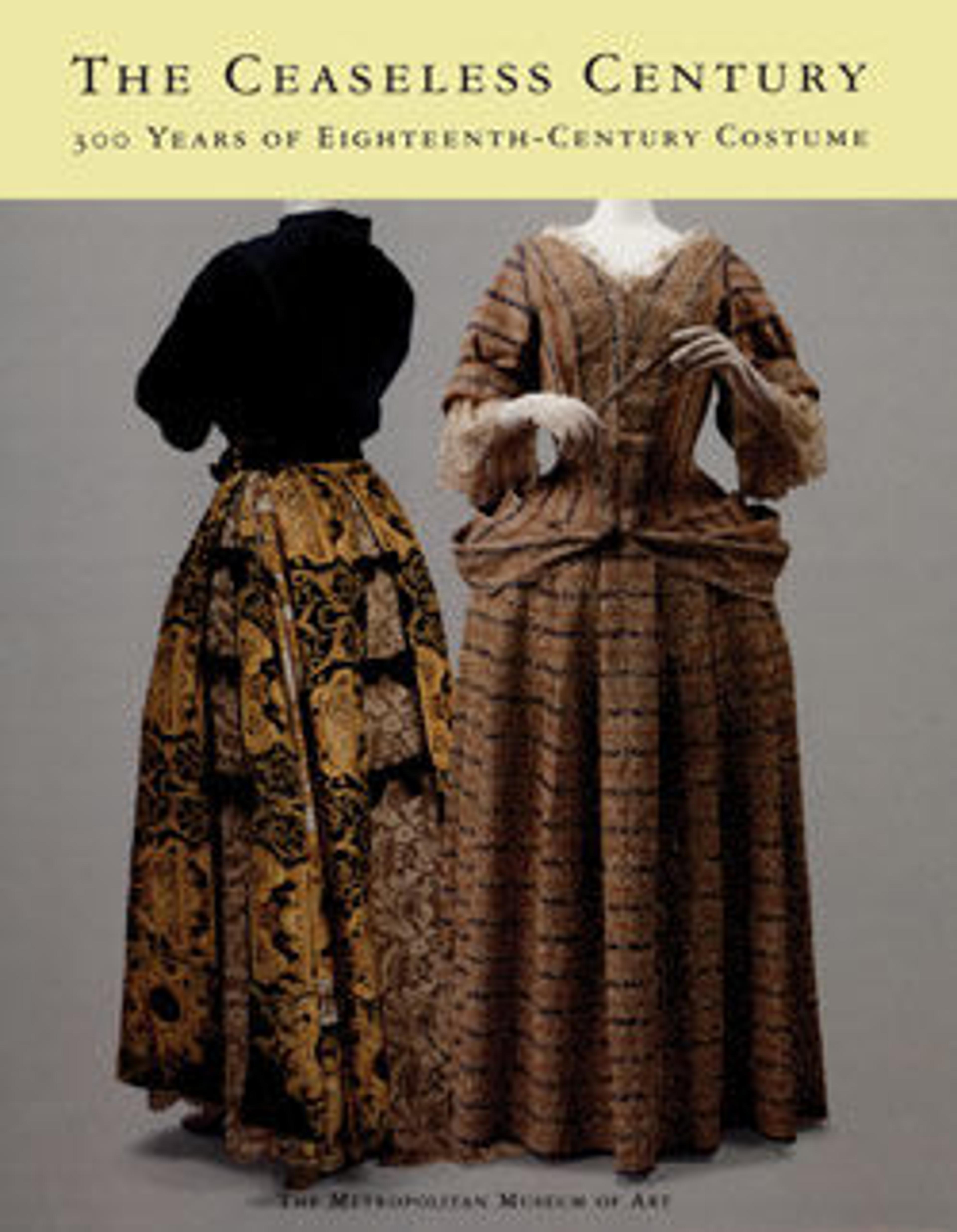"Eventail"
This piece is unarguably the 1950s moderne of the cocktail hour. With a strapless neckline, a rather ostentatious constructive line, and a colorful surface print, the dress would have been rejected for the early evening prior to the 1950s, as its various components belonged (respectively) to late evening or daytime dressing. By mid-century, Parisian couturiers were going to great lengths to enforce an exaggerated formality in order to differentiate themselves from American designers.
In his romantic "Aimant" collection, Dior offered the emphatic reiteration of his commitment to the eighteenth century made modern. Here referring to the ubiquitous fans women used to "communicate" at court, Dior raised the waist but delighted in the fullness of the skirt and pronounced form of the bust. The fan's role is one to which Dior would have been very sensitive. The aegis and instrument of powerful and coquettish women, it both conceals and discloses. It was, of course, the rigidity of inner structure emanating from the corset that permitted Dior the license of the strapless gown, just as the décolletage of the eighteenth century was made possible by the shaping of the waist below and the platform of bust support.
Dior's comparison of the cocktail-clad hostess and the eighteenth-century woman denotes the relevance of clothing and decoration to the social function of women during these eras. While clearly ornamented differently, these personalities depended on a superficial facade through which to communicate their respective social roles.
In his romantic "Aimant" collection, Dior offered the emphatic reiteration of his commitment to the eighteenth century made modern. Here referring to the ubiquitous fans women used to "communicate" at court, Dior raised the waist but delighted in the fullness of the skirt and pronounced form of the bust. The fan's role is one to which Dior would have been very sensitive. The aegis and instrument of powerful and coquettish women, it both conceals and discloses. It was, of course, the rigidity of inner structure emanating from the corset that permitted Dior the license of the strapless gown, just as the décolletage of the eighteenth century was made possible by the shaping of the waist below and the platform of bust support.
Dior's comparison of the cocktail-clad hostess and the eighteenth-century woman denotes the relevance of clothing and decoration to the social function of women during these eras. While clearly ornamented differently, these personalities depended on a superficial facade through which to communicate their respective social roles.
Artwork Details
- Title: "Eventail"
- Design House: House of Dior (French, founded 1946)
- Designer: Christian Dior (French, Granville 1905–1957 Montecatini)
- Date: fall/winter 1956–57
- Culture: French
- Medium: silk
- Credit Line: Gift of Muriel Rand, 1963
- Object Number: C.I.63.36a–c
- Curatorial Department: The Costume Institute
More Artwork
Research Resources
The Met provides unparalleled resources for research and welcomes an international community of students and scholars. The Met's Open Access API is where creators and researchers can connect to the The Met collection. Open Access data and public domain images are available for unrestricted commercial and noncommercial use without permission or fee.
To request images under copyright and other restrictions, please use this Image Request form.
Feedback
We continue to research and examine historical and cultural context for objects in The Met collection. If you have comments or questions about this object record, please complete and submit this form. The Museum looks forward to receiving your comments.
